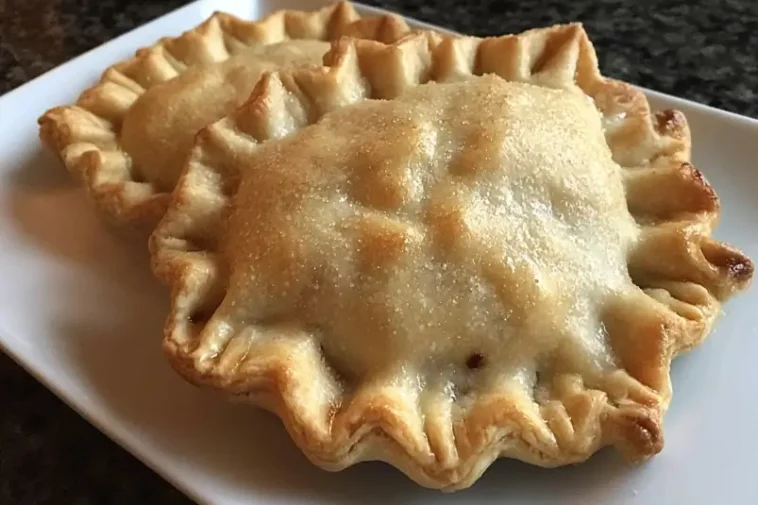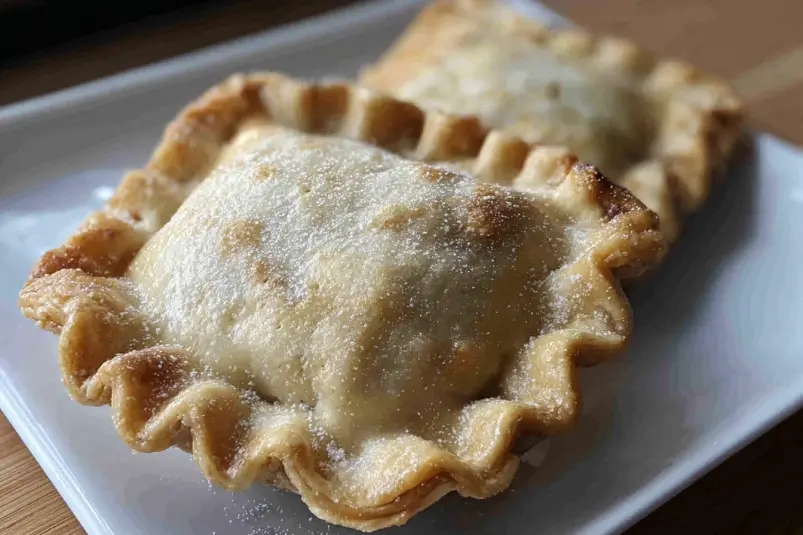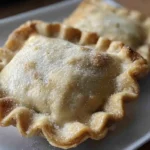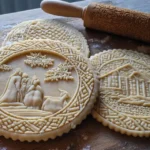Among the many holiday cookies rooted in European tradition, few carry as much history and artistry as Springerle. These beautiful German cookies, embossed with intricate designs from carved molds or rolling pins, date back to at least the 14th century. Originally shared at festive gatherings and religious celebrations, they are prized not only for their delicate flavor but also for their stunning appearance. Light, crisp, and lightly flavored with anise, springerle are more than just cookies—they’re a glimpse into culinary heritage.
Though their ornate surface makes them look challenging to bake, the process is quite approachable with patience and the right steps. The key lies in preparing the dough properly, imprinting clean designs, and allowing time for the cookies to dry before baking. This drying ensures they hold their patterns in the oven and achieve their signature pillow-like texture. Let’s explore how to make traditional springerle, along with helpful tips, variations, and ways to enjoy them.
Ingredients
This recipe makes about 3–4 dozen cookies, depending on size.
- 4 large eggs, room temperature
- 2 cups (400 g) granulated sugar
- 4 cups (480 g) all-purpose flour (plus more for dusting)
- 1 teaspoon baking powder
- ½ teaspoon salt
- 2 tablespoons whole milk
- 1 teaspoon anise extract or 2 teaspoons crushed anise seeds
- Optional: zest of 1 lemon for a bright flavor
Special equipment: Springerle molds or a carved springerle rolling pin.
Instructions
Step 1: Beat the Eggs and Sugar
In a large mixing bowl, beat the eggs with an electric mixer on high speed until thick and pale, about 5–7 minutes. Gradually add the sugar and continue beating until the mixture is very light and fluffy. This step is essential for creating springerle’s airy texture.
Step 2: Add Flavorings
Mix in the milk, anise extract (or crushed seeds), and lemon zest if using. The flavoring is subtle but distinct—just enough to perfume the cookies without overpowering them.
Step 3: Incorporate Dry Ingredients
In a separate bowl, whisk together the flour, baking powder, and salt. Slowly fold the dry ingredients into the egg mixture in batches. Stir gently until a stiff dough forms. If the dough feels sticky, add a little more flour until it becomes workable.
Step 4: Roll Out the Dough
Lightly flour your work surface and rolling pin. Roll the dough to about ¼-inch (6 mm) thickness. Be careful not to roll too thin, as springerle rise slightly in the oven and need enough thickness to hold their imprint.
Step 5: Impress the Designs
Dust your springerle mold or rolling pin lightly with flour to prevent sticking. Press firmly into the dough to create sharp, clean designs. Trim around each imprint using a knife, pastry cutter, or cookie cutter. Transfer the cookies to a parchment-lined baking sheet.
Step 6: Dry Overnight
This step is crucial. Leave the cookies uncovered at room temperature for 12–24 hours. During this time, the top surface dries, which helps preserve the intricate designs and creates springerle’s signature “foot” or rise when baked.
Step 7: Bake
Preheat the oven to 300°F (150°C). Bake the cookies for 12–15 minutes, depending on size. They should remain pale on top but lift slightly at the base. Do not overbake, as they can lose their delicate texture.
Step 8: Cool and Rest
Allow the cookies to cool completely on wire racks. Traditional springerle are often stored for a few days to let the flavors develop and the texture soften slightly before eating.
Conservation and Storage
- Room Temperature: Store cooled cookies in an airtight tin for up to 2 weeks. Place parchment paper between layers to prevent sticking.
- Long-Term Storage: Springerle improve with time. Store them in airtight containers in a cool, dry place for up to 4 weeks. Their flavor deepens as they rest.
- Freezer: Freeze baked cookies in airtight containers for up to 3 months. Thaw at room temperature before serving.
Variations
- Citrus Twist: Add orange or lime zest for a brighter, more modern flavor.
- Spiced Springerle: Mix in ½ teaspoon cinnamon, cardamom, or nutmeg for a spiced twist.
- Almond Flavor: Replace the anise extract with almond extract for a different but equally classic flavor.
- Color Accents: Brush imprinted designs lightly with edible pearl dust or food coloring after baking to highlight the patterns.
- Chocolate Springerle: Add 2 tablespoons of cocoa powder to the flour mixture for a subtle cocoa version.
Tips for Perfecting Springerle
- Beat eggs well: The initial beating creates the structure of the dough. Do not skip or shorten this step.
- Flour molds properly: A light dusting of flour ensures sharp designs without sticking.
- Dry thoroughly: Overnight drying is non-negotiable. Without it, the designs will blur in the oven.
- Control oven temperature: Bake low and slow to preserve the pale, delicate tops.
- Plan ahead: Springerle are best enjoyed after resting for a few days to let flavors deepen.
Serving Suggestions
- With Coffee or Tea: Springerle are perfect for dipping into hot drinks, as their crisp texture softens beautifully.
- Holiday Platters: Arrange alongside other traditional cookies like gingerbread, linzer cookies, or snowball cookies for a festive spread.
- Gift Giving: Package them in decorative tins lined with parchment for thoughtful homemade gifts.
- Special Celebrations: Use different molds for weddings, birthdays, or seasonal holidays to tailor the cookies to the occasion.
- Pair with Wine: In true European tradition, serve with dessert wines like Riesling or Gewürztraminer.
Conclusion
Traditional Springerle are more than just cookies—they’re edible works of art that carry centuries of tradition. With their intricate patterns, delicate flavor, and satisfying crunch, they represent both craftsmanship and celebration. By mastering a few key techniques—like properly beating the eggs, drying the cookies overnight, and baking at low heat—you can bring this heritage recipe into your own kitchen. Their versatility also allows for endless variations, from citrus and spice to modern color accents.
Whether shared during the holidays, gifted to loved ones, or enjoyed with a warm drink, Springerle deliver both beauty and flavor. Once you try them, they’ll likely become a cherished part of your seasonal baking tradition—just as they have been for generations before.
PrintTraditional Springerle: A Step-by-Step Guide
- Total Time: 45 minutes + drying
- Yield: 36–48 cookies (depending on size) 1x
- Diet: Vegetarian
Description
Traditional Springerle are classic German holiday cookies embossed with intricate designs. Light, crisp, and flavored with anise, they’re as beautiful as they are delicious. Perfect for Christmas, special occasions, or thoughtful homemade gifts.
Ingredients
(Makes about 3–4 dozen cookies)
4 large eggs, room temperature
2 cups (400 g) granulated sugar
4 cups (480 g) all-purpose flour (plus more for dusting)
1 teaspoon baking powder
½ teaspoon salt
2 tablespoons whole milk
1 teaspoon anise extract or 2 teaspoons crushed anise seeds
Optional: zest of 1 lemon (for brightness)
Special Equipment: Springerle molds or a carved Springerle rolling pin
Instructions
Step 1: Beat Eggs and Sugar
Beat eggs with an electric mixer on high for 5–7 minutes until thick and pale.
Add sugar gradually and continue mixing until light and fluffy.
Step 2: Add Flavorings
Stir in milk, anise extract (or seeds), and lemon zest if using.
Step 3: Mix Dry Ingredients
Whisk flour, baking powder, and salt.
Fold gently into egg mixture until a stiff dough forms. Add a little more flour if sticky.
Step 4: Roll Dough
Roll dough on a lightly floured surface to ¼ inch (6 mm) thick.
Step 5: Impress Designs
Lightly flour molds or rolling pin.
Press firmly to create sharp designs.
Trim with a cutter and transfer to a parchment-lined baking sheet.
Step 6: Dry Overnight
Leave uncovered for 12–24 hours. This drying preserves the patterns and creates the “foot” during baking.
Step 7: Bake
Preheat oven to 300°F (150°C).
Bake 12–15 minutes until bases lift slightly. Tops should stay pale.
Step 8: Cool & Rest
Cool on wire racks.
Allow cookies to rest for a few days before enjoying—the flavor deepens beautifully.
Notes
Do not skip the drying step; it’s crucial for preserving patterns.
Store Springerle for a few days before eating for best texture and flavor.
- Prep Time: 30 minutes (+ overnight drying)
- Cook Time: 15 minutes
- Category: Dessert / Cookies
- Method: Baking
- Cuisine: German / European
Nutrition
- Serving Size: 1 cookie
- Calories: 80
- Sugar: 9 g
- Sodium: 25 mg
- Fat: 1 g
- Saturated Fat: 0 g
- Unsaturated Fat: 0.5 g
- Trans Fat: 0 g
- Carbohydrates: 17 g
- Fiber: 0.5 g
- Protein: 1 g
- Cholesterol: 15 mg
Keywords: Springerle cookies, traditional German cookies, anise holiday cookies, embossed cookies








